Author: Steve Thanos
The malt typically used by brewers goes through a process whereby barley is soaked then allowed to germinate before it is kilned or roasted, which fundamentally alters the chemical profile of the grain. However, there are various specialty grains produced using different methods, such as chit malt, which has seen increased usage recently as a means of improving a beer’s body and foam.
The term “chit” refers to the first stage of germination, where the barley is moist enough from steeping to start the process of converting starch into sugar, at which point it gets lightly kilned. In essence, chit malt is barely malted, which results in higher protein and starch content than standard malt while purportedly contributing a grassy characteristic to beer. Moreover, chit malt has a relatively large beta-glucan content that increases the perceived viscosity of beer.
Over the last few years, I’ve noticed increased talk of chit malt as an ingredient used to improve mouthfeel and head retention, particularly in modern hoppy styles. Having never used it, I was curious of the impact it might have on an American Pale Ale and designed an xBmt to test it out!
| PURPOSE |
To evaluate the differences between an American Pale Ale made with chit malt and one made without chit malt.
| METHODS |
While chit malt is often used in modern Hazy IPA, I went with a more toned down American Pale Ale recipe for this xBmt, as I didn’t want heavy hopping to cover up any impact of the chit malt.
I Got Your Six
Recipe Details
| Batch Size | Boil Time | IBU | SRM | Est. OG | Est. FG | ABV |
|---|---|---|---|---|---|---|
| 5 gal | 60 min | 52.3 | 6.4 SRM | 1.054 | 1.008 | 6.04 % |
| Actuals | 1.054 | 1.008 | 6.04 % | |||
Fermentables
| Name | Amount | % |
|---|---|---|
| Ye Olde Pale Ale | 9 lbs | 90 |
| Chit Malt | 1 lbs | 10 |
Hops
| Name | Amount | Time | Use | Form | Alpha % |
|---|---|---|---|---|---|
| Cascade | 14 g | 60 min | Boil | Pellet | 10 |
| Sabro | 20 g | 10 min | Boil | Pellet | 14 |
| Strata | 20 g | 10 min | Boil | Pellet | 12 |
| Sabro | 14 g | 5 min | Boil | Pellet | 14 |
| Strata | 14 g | 5 min | Boil | Pellet | 12 |
Yeast
| Name | Lab | Attenuation | Temperature |
|---|---|---|---|
| Flagship (A07) | Imperial Yeast | 77% | 32°F - 32°F |
Notes
| Water Profile: Ca 40 | Mg 13 | Na 9 | SO4 10 | Cl 14 |
Download
| Download this recipe's BeerXML file |
I started my brew day by adding identical volumes of RO water to separate BrewZilla units then setting the controller to heat it up.
After adding the same amount of minerals to each kettle, I milled the grains into separate buckets, using an equivalent amount of additional pale malt in place of the chit malt in one batch.
Once the water for each batch was adequately heated, I incorporated the grains then checked to make sure both were at the same target mash temperature.
Both mashes were left alone for an hour.
At this point, I prepared the kettle hop additions.
Once each 60 minute mash was complete, I removed the grains and boiled the worts for 60 minutes before quickly chilling them. Hydrometer measurements showed both worts achieved the same target OG
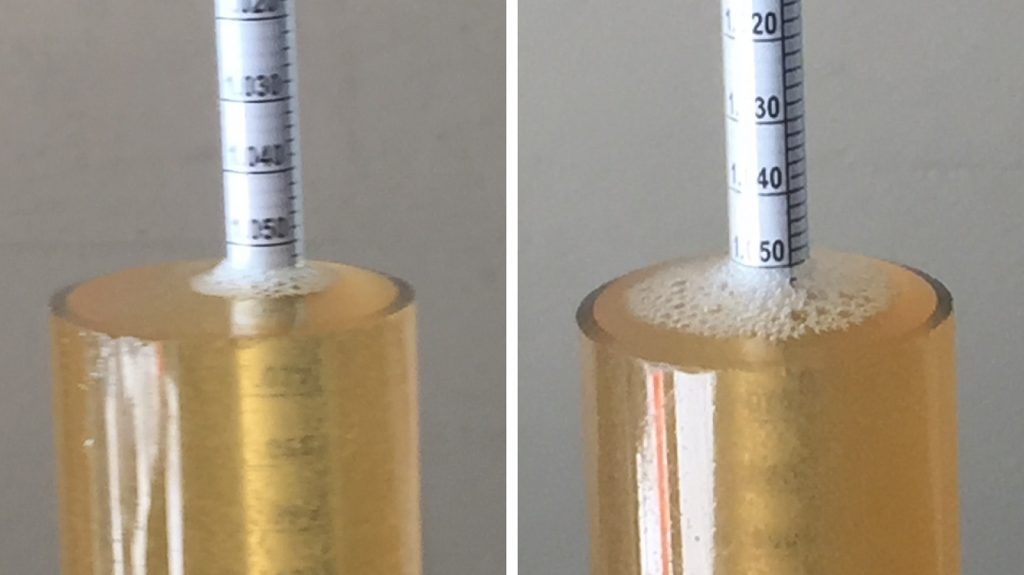
After racking identical volumes of wort from each batch to sanitized fermenters, I placed them in my chamber controlled to 68°F/20°C then pitched a pouch of Imperial Yeast A07 Flagship into each one.
After 2 weeks of fermentation, all signs of activity were absent, so I took hydrometer measurements showing both achieved the same FG.
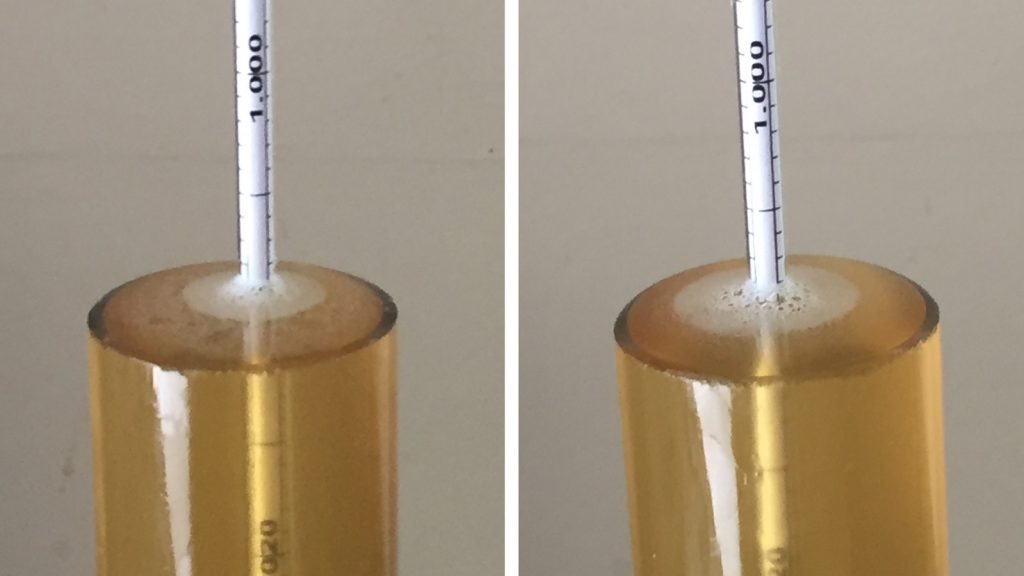
At this point, I racked the beers to sanitized kegs, which were placed in my keezer and left on gas for 2 weeks before I began serving them to tasters for evaluation.
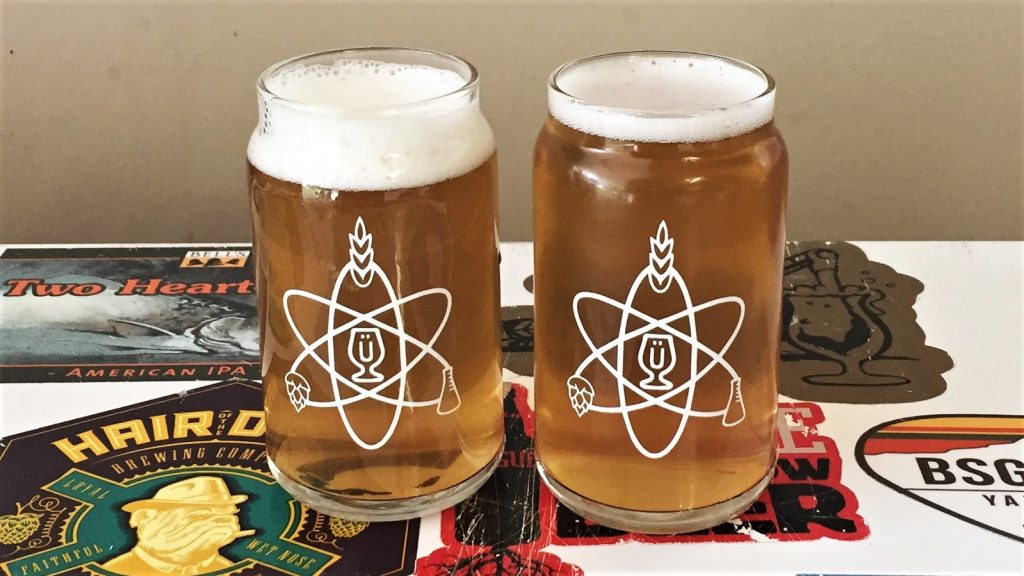
| RESULTS |
A total of 20 people of varying levels of experience participated in this xBmt. Each participant was served 1 sample of the beer made with chit malt and 2 samples of the beer made without chit malt in different colored opaque cups then asked to identify the unique sample. While 11 tasters (p<0.05) would have had to accurately identify the unique sample in order to reach statistical significance, 6 did (p=0.70), indicating participants in this xBmt were unable to reliably distinguish an American Pale Ale made with chit malt from one made without chit malt.
My Impressions: Out of the 5 semi-blind triangle tests I attempted, I correctly picked the odd-beer-out just 2 times. In terms of aroma, flavor, and mouthfeel, these beers were identical to me, both clean and simple examples of American Pale Ale.
| DISCUSSION |
Given the fact it’s less processed, chit malt retains higher amounts of certain chemicals, such as beta-glucan, that impact the body, mouthfeel, and foam quality of beer. It’s also said to contribute a “raw” grain flavor to beer that some describe as grassy. Interestingly, tasters in this xBmt were unable to reliably distinguish an American Pale Ale made with 10% chit malt from one made without chit malt.
One explanation for these results is that any character contribution of the chit malt was hidden by other aspects of the beer used for this xBmt. It’s true that this Pale Ale possessed noticeable hoppiness, but it was by no means pungent, and the results also suggest tasters couldn’t tell a difference in mouthfeel either.
However, there was one easily observable difference between these beers that confirms existing claims– the batch made with chit malt had a noticeably thicker head than the one made with just pale malt. On this point alone, I view chit malt as a valuable piece of the brewing arsenal that can be used to improve foam quality, even if it doesn’t have much of an organoleptic effect.
If you have any thoughts about this xBmt, please do not hesitate to share in the comments section below!
Support Brülosophy In Style!
All designs are available in various colors and sizes on Amazon!
Follow Brülosophy on:
FACEBOOK | TWITTER | INSTAGRAM
If you enjoy this stuff and feel compelled to support Brulosophy.com, please check out the Support page for details on how you can very easily do so. Thanks!


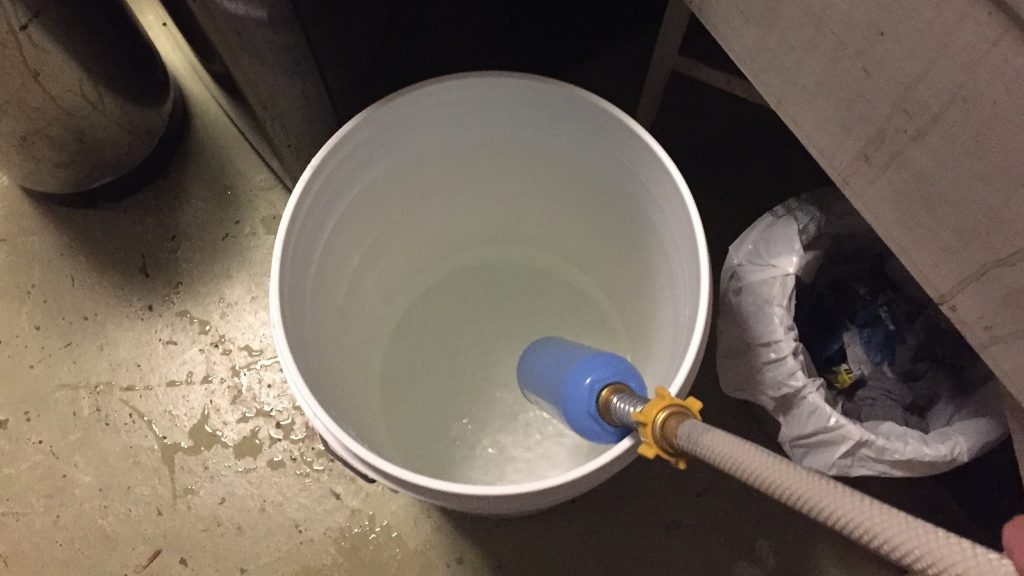
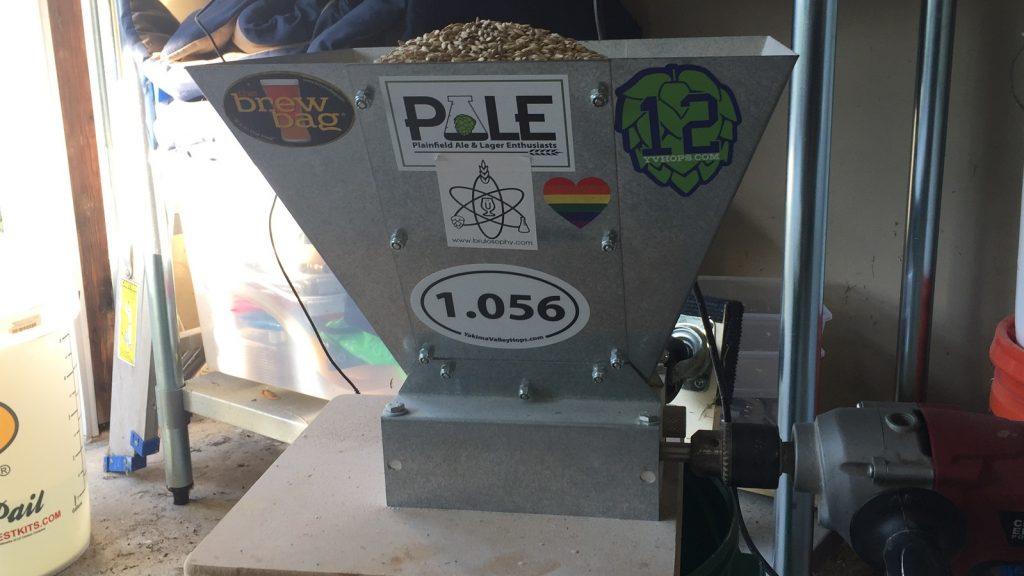
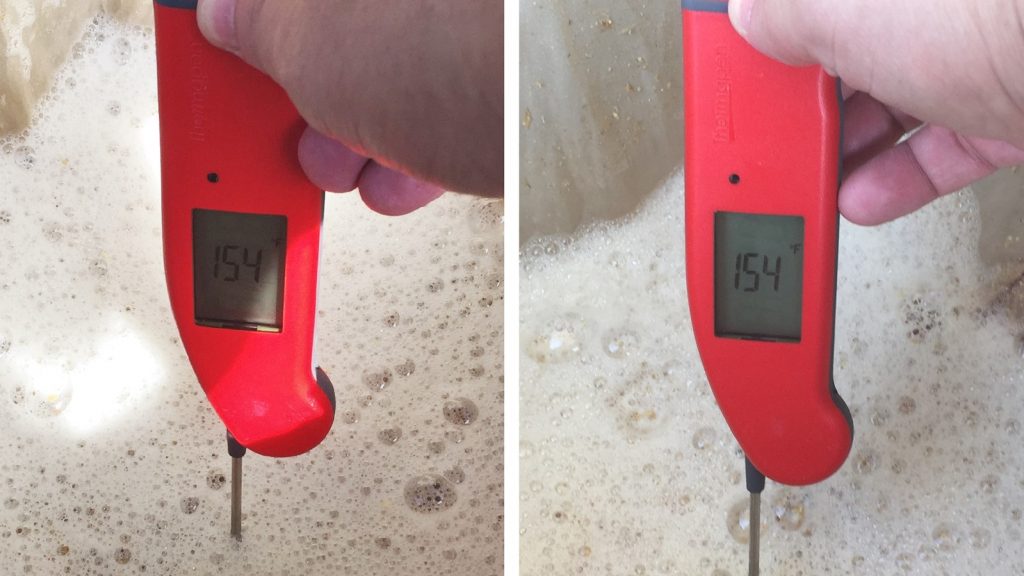
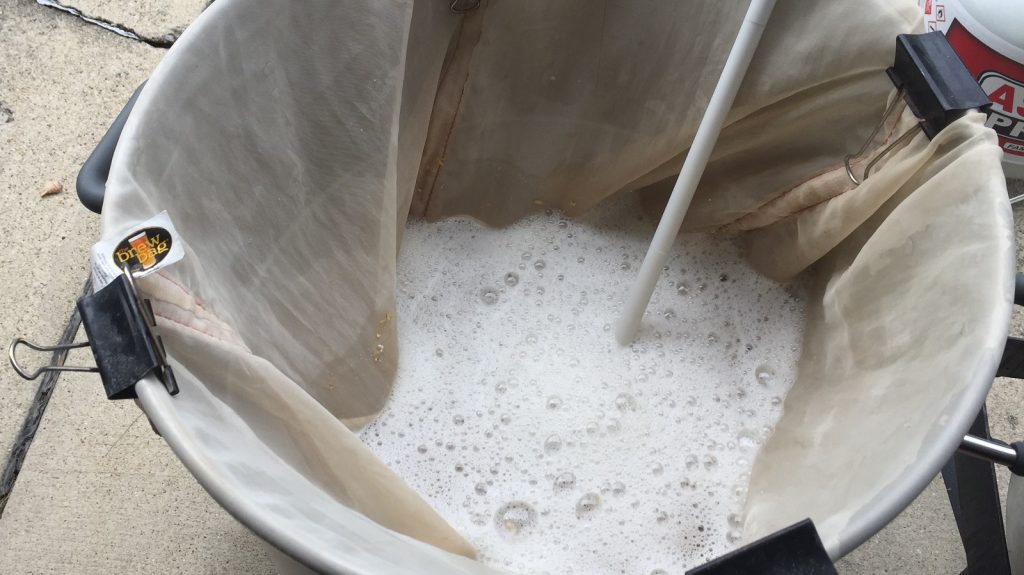
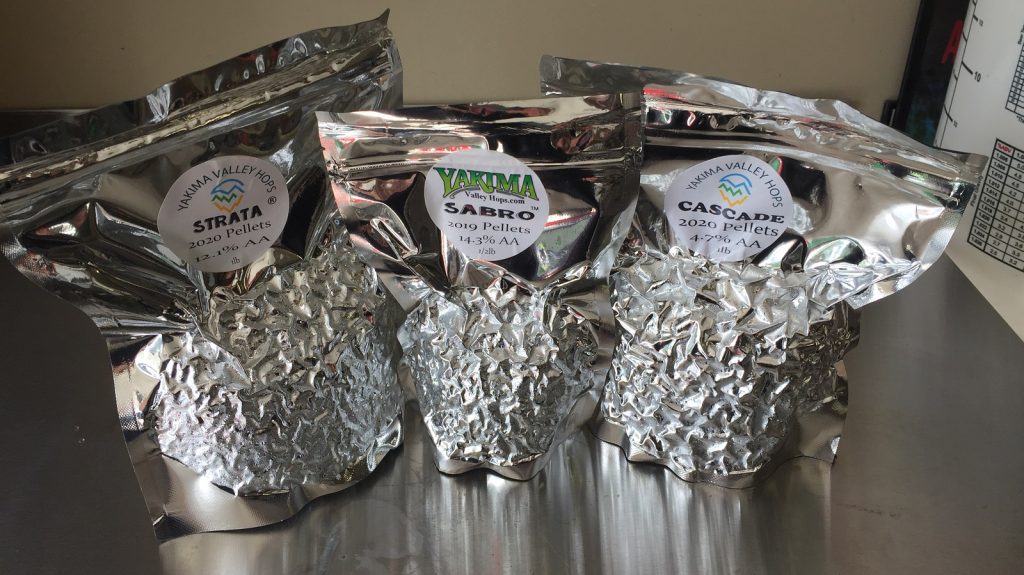
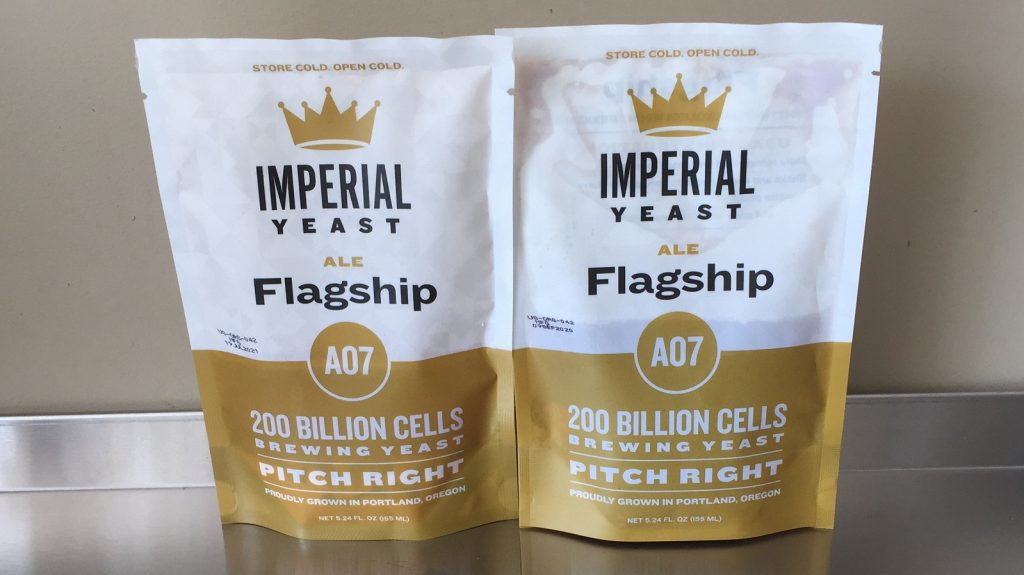











11 thoughts on “exBEERiment | Impact Chit Malt Has On American Pale Ale”
Do you guys even bother to edit these anymore?
The results posted are from a different exbeeriment, and not the chit malt exbeeriment
Eeek! That’s a pretty bad copy and paste job…and another statistically insignificant writeup….
What about the following line:
“….which were placed in my keezer and left on gas for 2 weeks before I began serving them to tasters for evaluation.”
Am I right in saying that you didn’t do any group blind tasting sessions…(?)
Not being able to distiguish taste or mouthfeel – but getting better head retention – seems like a win win situation to me. I may give this a go.
From a research perspective, it’s silly to do an experiment to test subjective differences in two objective parameters such as body (viscosity) and foam, without doing an objective test of such parameters.
You don’t know whether there’s a difference and you didn’t detect it because of your testing protocol, or if there’s no difference because there’s no difference or because you used chit malt incorrectly or probability bad luck.
It’s like measuring a difference in length via eyeballing when you can use a ruler.
I thought the idea here was to determine whether a difference exists due to the variable (chit malt), not to quantify the difference.
So to take your analogy- you don’t need a ruler when you can clearly see a difference in length. In any case, we can observe a difference in foam by looking at the photo, can’t we? I am curious to know on what basis would you deny this difference?
sounds like good chit to me!
The OG and FG for both beers were the same– I would think there’d be a higher FG for the chit malt beer if it had contributed more protein or polysaccharides to the wort? Or could yeast have digested and fermented these?
As I understand it (or just imagine it) I think the difference between high and low protein malts and their ability to influence SG is very small compared to sugar content and probably something a home brew hydrometer couldn’t pick up reliably.
Take for example the density of a purified solution of Albumin protein – at 8 percent (w/v) is around 1.022 and at 12percent (w/v) its 1.033, however in a beer protein would be diluted down by water so assuming the same extraction as sugars in the mash a 10plato beer is going to have a range of 1 – 1.5% protein theoretically. In actual fact it’s often lower (around 0.5% or less) probably due to the breakdown of proteins in the mash and yeast and reduced extraction as some proteins may be less hydrophilic than sugars. So the difference in SG of a low protein malt beer and a slightly higher one is just a point or so, if that, hard to measure reliably at home.
Thank you for that explanation.
Get same flavour and grassiness from Weyrmann carafoam ( called carapils in europe ) Could this be their secret process? Renaming chit malt. Who knows.
cheers,
Andy
Melbourne, Australia.